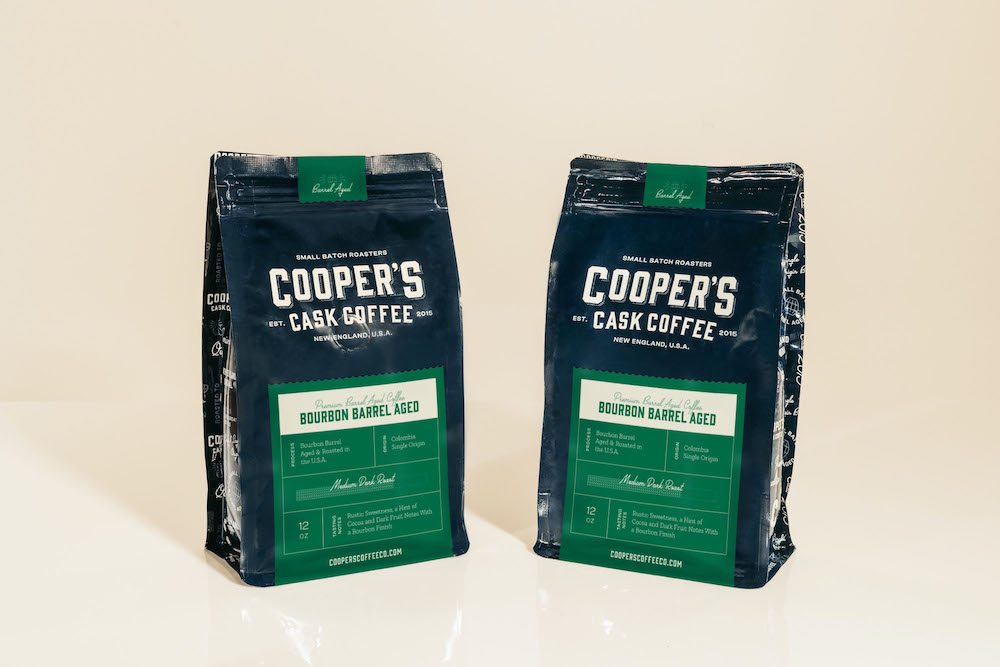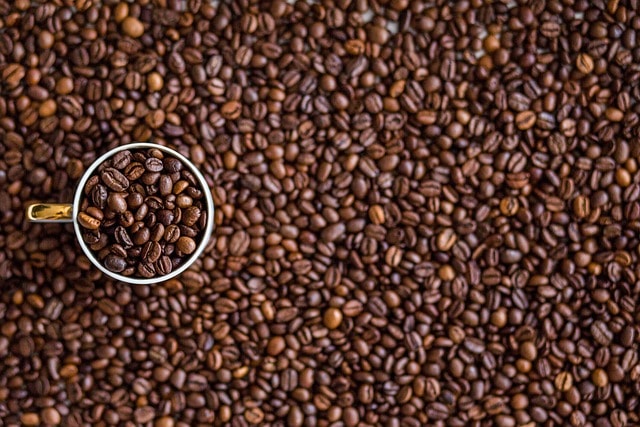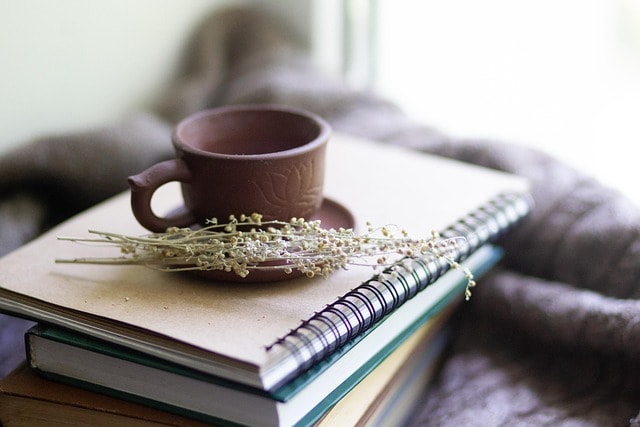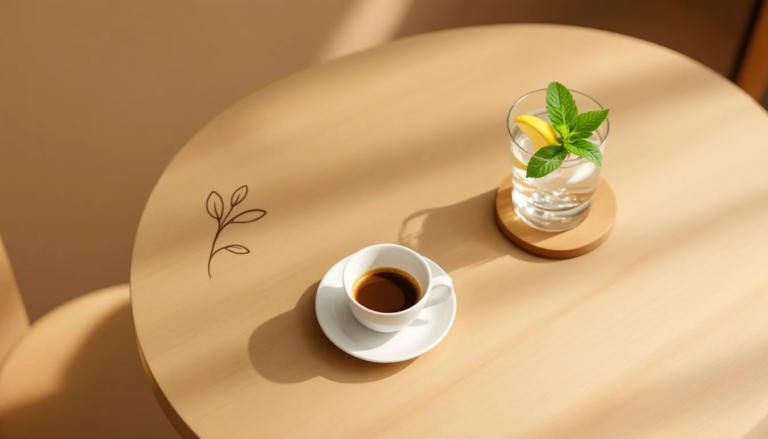Teddy Roosevelt. Tallulah Bankhead. Winston Churchill. Harry Truman. Frank Sinatra. Keith Richards.
What did they all have in common? They loved bourbon.
(Side Note: Keith Richards still does, and will until the year 2562 when he flies in a spaceship to Alpha Centauri for the 472nd Annual Stones Final Tour. At that time he’ll drink Saurian Brandy and smoke Dagobah Ditchweed. #KeithRichardsForever)
We also share that same love for great bourbon. It’s why our team of coffee experts created Cooper’s Cask Coffee Bourbon Barrel Aged Coffee. Our bourbon infused coffee offers the best of both worlds: the rich flavors of single origin coffees, with the all-American sweetness of bourbon overtones.
Read on for a fresh pot of knowledge on bourbon, coffee, and your next favorite cup from Cooper’s Cask Coffee.
What does “barrel aged” coffee mean?
It pretty much means what it says: coffee that’s been aged in a barrel. However, the name is the only easy party.
The process for barrel aging coffee to infuse flavors requires meticulous attention and timing. The barrel isn’t like a metal oil barrel; we use retired spirit and wine barrels, chosen for the quality of the wood and the superior spirits or wine it originally held.
Also, barrel aging coffee doesn’t mean fermentation. When our coffee spends 4 to 8 weeks in one of these barrels, it’s carefully timed to infuse the most flavor without causing damage to the green coffee beans.
For bourbon infused coffee (or any of our other barrel aged coffees), we also spent countless test hours roasting and cupping different coffees to ensure the best match of coffee flavor profile to the overtones of the spirit or wine.
When you enjoy a cup, mug, or pot of Cooper’s Cask Coffee Barrel Aged Coffee, you’re getting an artisan experience in every sip.
How the Barrel Aging Process Works
Let’s take a deeper look at the steps involved to make each cup your best barrel aged coffee experience
Choosing the Right Beans
Sub-par coffee beans deliver sub-par coffee results. To make sure that never happens at Cooper’s Cask Coffee, we only source the best, single origin coffee beans. We match the coffee bean’s roasted flavor notes and subtleties with the flavors imparted by the infusion process.
Single Origin Coffee Benefits Beyond Flavor
We get the highest taste integrity in single origin coffee beans. Your palate enjoys the full terroir of the coffee, including the unique flavors of that coffee varietal.
However, choosing single origin coffees requires working with smaller farms in those regions. This helps deliver fair trade pricing for their work. And these farms don’t use the chemicals that large corporate farms do. You get a more natural bean, artisan grown, and hand-picked for maximum ripeness.
Why aren’t the beans roasted before going in the barrel?
We have 2 great reasons for not roasting the beans first.
Green Coffee Beans Absorb More
Unroasted green coffee beans absorb the taste characteristics of their storage containers more quickly and more completely.
That’s great for barrel aging bourbon infused coffee. However, it can be bad if the green coffee beans are left for a long time in the wrong container. For example, if green coffee beans remain their burlap shipping bag for too long, the roasted results will deliver the bean terroir—along with the overwhelming flavor of burlap. And that’s a negative, Ghost Rider.
Keeping the Roasted Beans Fresh
We ship our beans within 2 days of their roasting. Using fresh roasted coffee beans gives you the best flavor in your cup.
The 4 to 8 weeks required for barrel aging would damage the flavor profile of the beans. Even with the infused flavor, that amount of post-roasting time could give you a lackluster, bland, bitter, and sometimes “dusty” taste. Ain’t nobody got time for that.
Roasting the Barrel Aged Beans
We don’t roast any of our coffee beans until we receive an order. Once the green coffee gets roasted, the clock starts ticking and your coffee has about 7 to 14 days to retain peak freshness.
That’s why we don’t stockpile roasted coffee beans. Cooper’s Cask Coffee never sits roasted in warehouses or on retail shelves for many weeks or months. We only deliver the freshest coffee, because gourmet experiences require care. That’s why our roast date and lot number are hand-written on every bag, by the master roaster. Quality matters, and Cooper’s Cask Coffee delivers.
How We Make Our Bourbon Infused Coffee
It all starts with green Colombia single origin coffee beans. These beans are grown from volcanic soil rich in minerals and nutrients.
On its own, our Colombian Dark Roast Coffee provides a naturally vibrant and smooth flavor including hints of rustic sweetness, cocoa, and dark fruit notes. This coffee is perfect for enjoying hot, or for making cold brew.
The retired bourbon barrels we use are sourced from the number one producer of bourbon in the world: Kentucky.
The fact is, Kentucky produces 95% of the world’s bourbon. That amazing percentage doesn’t come from Kentucky having a monopoly on bourbon production. Kentucky is just really, really, really good at it.
Because bourbon barrels can only be used once to create bourbon, we get wet barrels that recently held the world’s favorite bourbons, and load them with green coffee beans. Four to 8 weeks later, we take those infused beans and roast them to order.
Brewing Your Bourbon Infused Coffee
The barrel aging process infuses our beans with complex bourbon overtones, and the roasting process brings out the best of the bean and barrel.
The last step involves the brewing. We’ve tested pretty much every brewing process possible to fully experience our barrel aged coffees where it’s most important: in the cup.
Our coffee experts discovered that with the bold flavors in our barrel aged coffees, some brewing methods rose to the top of the list for delivering a balanced-yet-bold coffee experience.
We invite you to contact us for advice on coffee choices and brewing methods! Meanwhile, here are our 3 favorite methods for enjoying your new favorite coffee.
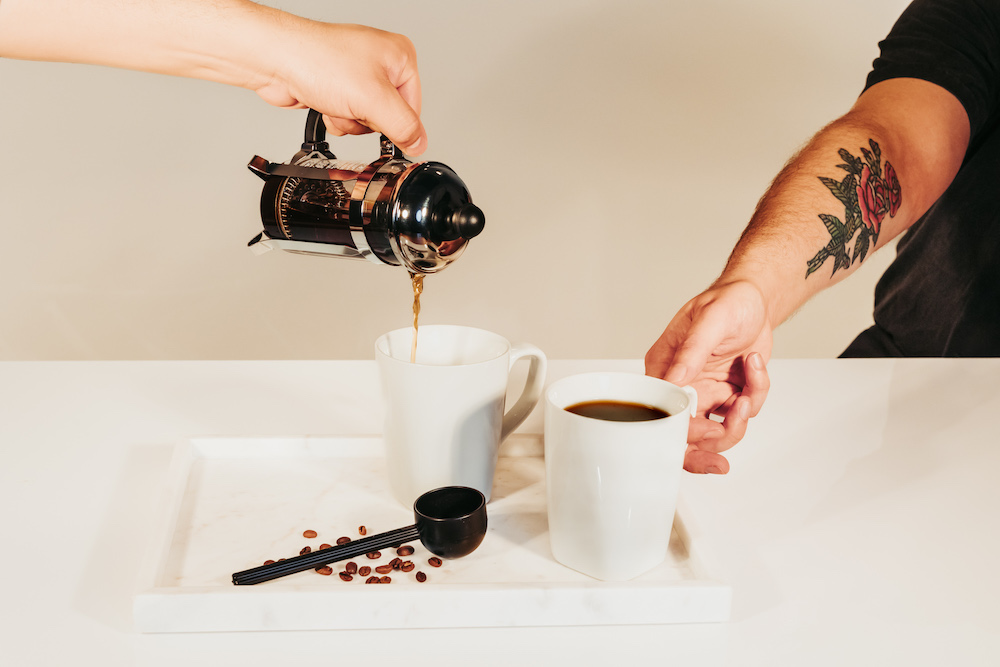
French Press Style
The French press brewing process starts with a coarse grind for your bourbon infused coffee beans. This helps to keep the grounds from slipping through the mesh filter. It also provides the just-right amount of surface area on the grounds for steeping.
Heat your filtered water to 195 to 205 degrees. If you don’t have a thermometer, a good rule of thumb is to get the water to the start of boiling, then turn off the heat source and let the water rest for about 1 minute.
Put your grounds into the French Press glass beaker/carafe, pour the hot water over them, and let them steep for 2 to 3 minutes. This is a wonderful time of anticipation as the aroma of coffee—with the gentle overtones of quality bourbon—fill the air.
During the 2 to 3 minutes of steeping, some people like to stir the grounds once or twice to ensure all the coffee has full contact with the water.
When steeping is done, put the French press lid on the beaker, push the plunger down, and watch the grounds move to the bottom as bourbon-infused heaven rises to the top.
What makes the French press our first choice?
The French press brewing method gives you total control over flavor extraction.
Temperature of the Water
Because you use external equipment to heat the water, you manually control the temperature, achieving 195 degrees to 205 degrees with personal accuracy. Make the water too hot and it over-extracts, or not hot enough and it under-extracts.
How Long the Coffee Steeps
We recommend 2 to 3 minutes of steeping time to enjoy the coffee’s optimum flavors. You may let it steep as long as 5 minutes to make a much richer flavor experience, but if you let any coffee steep in a French press for more than 5 minutes, you risk creating a bitter brew.
Automated equipment may not allow you to control the amount of time the water stays in contact with the coffee.
Pour Over Style
Our pour over setup includes a carafe/pot to collect the brew, and a dripper that sits on top of the carafe.
For this brewing method, use a burr grinder to reduce your Bourbon Barrel Aged Coffee beans to a medium-coarse grind.
Heat the water using external equipment, such an electric drip kettle, to the prime brewing temperature. Add a filter (paper or screen) into the dripper, and add your grounds into the filter.
When the water is ready, pour a small amount of it over the coffee grounds. This hot water soaks into the grounds for about 30 seconds, causing the grounds to swell for added surface area. . This is called making the grounds “bloom.”
Next, slowly pour the rest of the heated water onto the grounds in a steady spiral. Work your way to the outer edge of your filer, then do the same steady spiraling back to the center.
What makes pour-over style our second choice?
When it comes to brewing coffee—yes, we’re control freaks. Guilty as charged. The pour-over allows manual control to a degree, along with the choice of filtering.
Water Temperature
Just like with the French press, you use external equipment to get the water to the optimum 195 to 205 degree range.
Steeping the Coffee
You don’t really control the amount of time the coffee steeps in the heated water. That’s more a principle of gravity, as the water will only spend so much time on the grounds before dripping down into the pot.
However, you can decide what kind of filter o use. A screen filter allows all the coffee flavors and natural oils to be extracted, delivering a richer cup with more mouthfeel. A paper filter will retain the oils for less mouthfeel but a smoother cup.
AeroPress Style
An AeroPress coffee brewer mirrors the French press in many ways. The biggest difference involves what gets pressed. Instead of pushing the screen down through the brew like with a French press, you force the steeped coffee down through the grounds and filter.
First, grind your bourbon infused coffee at a super-fine level. You want your grounds to almost be a powder.
Put a fresh paper filter into the AeroPress’s perforated filter cap and attach it to the bottom of the water chamber (the cylinder body). Load your grounds into the water chamber.
Using external equipment, heat your filtered water and pour it into the chamber. Place the AeroPress plunger in the top, your coffee container at the bottom, and press down on the plunger. What comes out is delicious coffee for 1 to 2 people.
Because a super-fine grind allows maximum extraction, the Aeropress brewing process can take under 60 seconds to complete. With the paper filter secured in the filter cap, little to no grounds find their way to your cup.
Why AeroPress is #3 on our list.
When you want (or need) to brew Bourbon Barrel Aged Coffee on the go, AeroPress is the way to go. You can choose from two compact sizes, making either a single cup or two cups. Put it in your suitcase, carry bag, or backpack, and take it with you wherever you still want to enjoy great coffee.
Control of Extraction Time
You control the extraction time. You just have to be careful not to over-brew your coffee. The super-fine grind doesn’t require extended steeping. On the contrary, as soon as you attach the AeroPress plunger cap, it’s the best time to press down for optimum flavor.
Filter Options are Limited
AeroPress makes for handy, fast, easy-to-clean brewing. However, you can only use paper filters, removing the ability to add the delicious, enhanced mouthfeel oils into your cup.
Let’s talk about bourbon.
Bourbon is always whiskey, but whiskey isn’t always bourbon.
Bourbon is a type of whiskey, but it comes with different distinctions and rules. To be classified as bourbon, a whiskey must be:
- Composed of at least 51% corn
- Made in the United States
- Aged in new, charred American white oak barrels
- Achieve at least 80 proof.
The Difference Between Bourbon and Whiskey
There are the legal rules for what constitutes a “bourbon.” There are also distinct differences for your palate.
Because of the high corn content in the mash, Bourbon often has a sweeter taste than other whiskeys. Bourbon also tends to be smoother than whiskey, with a softer mouthfeel and an overall sweet-presenting flavor. If someone is new to enjoying whiskey, bourbon makes a good entry-level pleasure.
Wheated bourbons have a mash bill with a high concentration of wheat (outside of the corn content), which creates an even sweeter taste.
Bourbon Barrels: A One-and-Done Rule
The US government has regulations over which barrels can be used to make whiskey. TTB regulations—the Alcohol and Tobacco Trade and Tax Bureau—state that bourbon must be aged in a new, charred, American oak barrel.
It’s not just bourbon that must be aged in new charred barrels. This legal mandate includes rye, malt, and wheat whiskey.
Why is this a legal rule? It ensures the integrity of bourbon and whiskey quality. Recycled barrels run the risk of producing inconsistent flavor from batch to batch. They also dilute crucial flavoring elements found in 1st use barrels.
We won’t lie: there’s more to these new-charred barrel regulations. Their history includes prohibition, public safety, revival of the bourbon art form, and perhaps a little pressure from the coopers union.
Bourbon Barrels Live On
After their first use as a bourbon barrel, the barrel cannot be used for consecutive bourbon storage in America. However, outside of the U.S., they provide more whiskey-making uses.
Our retired bourbon barrels find their ways to spirits distillers across the globe. Scotch whiskey, Canadian Whiskey, Irish Whiskey, Caribbean rum, Mexican tequilas, and other spirits finish in these barrels in locales where the re-use isn’t prohibited by law.
However, the infusion available from these retired barrels goes beyond spirits. Other brewers l use these barrels to accent stouts, porters, wines, ciders, and more. They’ve even been used to barrel age syrups, honeys, and even Tabasco sauce!.
And of course, they create delicious barrel aged bourbon infused coffee from Cooper’s Cask Coffee!
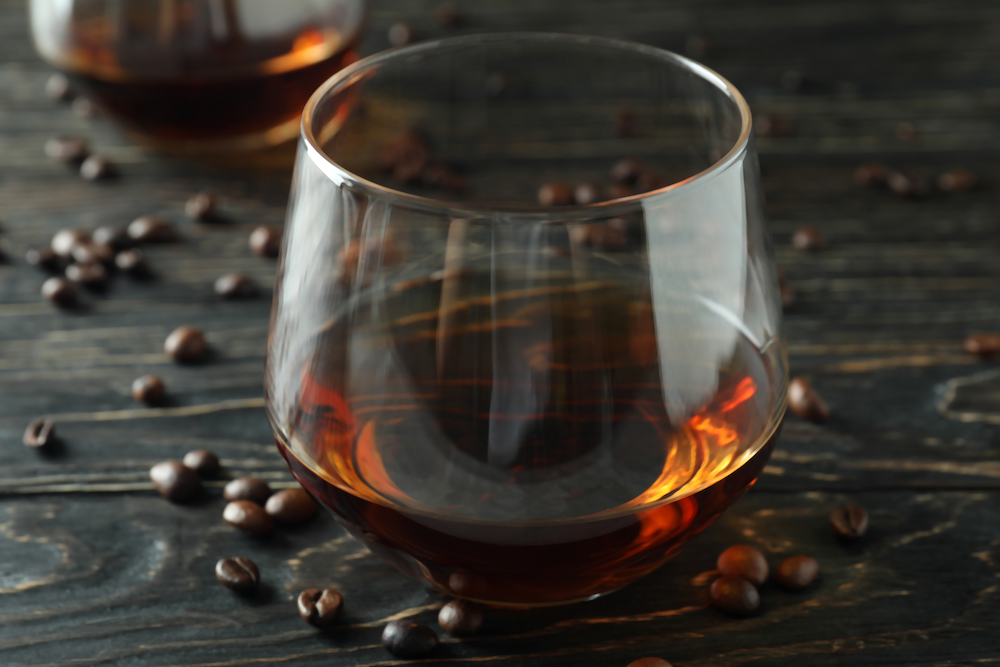
A Brief History of Bourbon
Bourbon infused coffee isn’t just about coffee with delicious bourbon overtones. It involves our skills defining the best single origin coffees, and the legacy of bourbon whiskey in America. Every sip connects you to stories of artisanal craft, hard work, and centuries-long methods.
Whiskey Crosses the Pond
When whiskey arrived in the fertile lands of colonial America, it came bottled in the brains of Scottish, Irish, and English settlers.
Their generations of distilling tradition primarily used grains like rye, barley, and wheat. These were not as widely grown yet in the colonies. However, the Americas provided another grain that worked nicely: corn.
The Beginning of the Barrel
Through the early 1800’s, Scottish distillers didn’t spend much time aging their whiskeys. They had a tendency to imbibe it fresh off the still (like many still products created during prohibition). Sure, they could use barrels to store their whiskey—but back then building barrels was a much slower, more expensive, and more hands-on process.
The cost-saving used barrels available for purchase could have been used previously to store pickled and dried fish, whale oil, pickled pork, and a slew of other edibles of the time. Even back in the days of yore, nobody wanted pickled-fish-infused whiskey.
In the 1850’s, a grape blight in France effectively emptied Cognac supplies in Europe. With Cognac being the alcool préféré of the Bourgeoisie, the aristocracy needed a substitute. Spanish sherries rose up the ranks to top choice, and as the sherry came in barrels, the barrels began to stack up.
Scottish distillers knew the importers didn’t find the empty barrels worth shipping back, so they bought up the surplus and stored their whiskeys in them.
Lo and behold, the longer the whiskey spent in these barrels, the more customers demanded barrel-aged whiskeys. When the Scottish distillers shipped their whiskey, it could spend considerable time in the barrels—which only made it taste better. Within a few decades, whiskey aged in sherry barrels became more popular with aristocracy than the sherry originally stored in them!
At the same time in America, Kentucky became a prominent center for whiskey production. With its ideal climate and abundant corn crops, “corn whiskey” or “Kentucky whiskey” grew to be a front-runner drink for the both wealthy and the not-wealthy.
Delineating Bourbon from Whiskey
The term “bourbon” originated in Kentucky’s Bourbon County. t first appeared in a Kentucky newspaper advertisement In 1840. If the whiskey bottle label had “Bourbon County” on it, that signified both a geographic origin and a specific style of whiskey.
Around 1900, distillers in Kentucky began experimenting with different grains and distillation techniques to refine their products.
In the search for their Bourbon to have a distinct flavor, they began to specifically use charred oak barrels. The charred interior of the oak added distinct colors, flavors, and aromas to the whiskey. Plus, by charring oak barrels that previously stored fish, salt, leather goods, etc, they could reduce that products flavors while adding the characteristic of the char, and the oak.
How Bourbon Became Law
In 1789, the fairly freshly distilled United States government levied a tax on distilled spirits. In reaction, distillers became recognizes as a formalized whiskey industry. It would take another half a century or so for the term “bourbon” to have legal definition.
As far as historians go, the term “Bourbon whiskey” first appeared in a Kentucky newspaper advertisement In 1840. If the whiskey bottle labe had “Bourbon County” on it, that signified both a geographic origin and a specific style of whiskey.
Fast-forward to 1964. That year the U.S. Congress officially recognized bourbon as a distinctive product of the United States. This allowed the government to establish federal regulations to protect the spirit’s authenticity.
You know the rest of the story. This “once upon a time”—barring a major few hiccup—has a happily ever after.
Can’t Kill the Spirit of This Spirit
Though the era of Nationwide Prohibition, from 1920 to 1933, destroyed the livelihood of many American distillers, the traditions survived both legally—and perhaps not so legally.
The illegal distilling of whiskey created “moonshine,” named after the fact that most of these illicit stills operated only at night. The moonshiners didn’t just keep a tradition alive, they started a whole new industry: NASCAR.
Drivers who moved moonshine were called “whiskey trippers.” These men had a tendency to soup up their vehicles so that they could outrun local and federal agents trying to bust them and dump their cargo onto the dirt. Whiskey trippers drove like bats out of Wilkes County, taking on terrain both paved and practically forested.
Arguably the most famous of these drivers was North Carolina native Junior Johnson, who got drafted into racecar driving after prohibition. He won 50 races as a premier series driver. His wins continued, and he went on to own his own NASCAR race team.
As a tribute to his humble, rumbling start, he built a life-size whiskey still in the NASCAR Hall of Fame in 2010. It’s one of the most popular attractions there to this day.
The Age of Bourbon Infused Coffee
Today, bourbon barrel aged coffee is enjoyed by anyone who loves coffee, and enjoys bourbon. It’s a two-for-one that creates a delightful cup of coffee with a distinct bourbon character complementing the single origin coffee flavors.
Order Your Barrel Aged Coffee
Your bourbon infused coffee experience is waiting for you at Cooper’s Cask Coffee! Order our Bourbon Barrel Aged Coffee, and receive freshly roasted, perfectly infused coffee beans that will pep up your perk.
If you’re new to barrel-aged coffees, have no fear. Cooper’s 100% money back guarantee means you won’t have to keep coffee that doesn’t satisfy you. Within 30 days of your purchase of any Cooper’s Cask Coffee, you can trade it out for another of our coffees, or get a refund—either way with shipping included!
Enjoy Gourmet Flavor in Every Cup
We’ve earned over 7000 4 and 5 star reviews on Amazon for our coffee products. Box sets, gift collections, cold brew to hot, join our satisfied customers over a cup of Cooper’s Cask Coffee.
Small batch, big satisfaction. Cooper’s Cask Coffee.
Sign up for our email list and get 10% off your first order!
